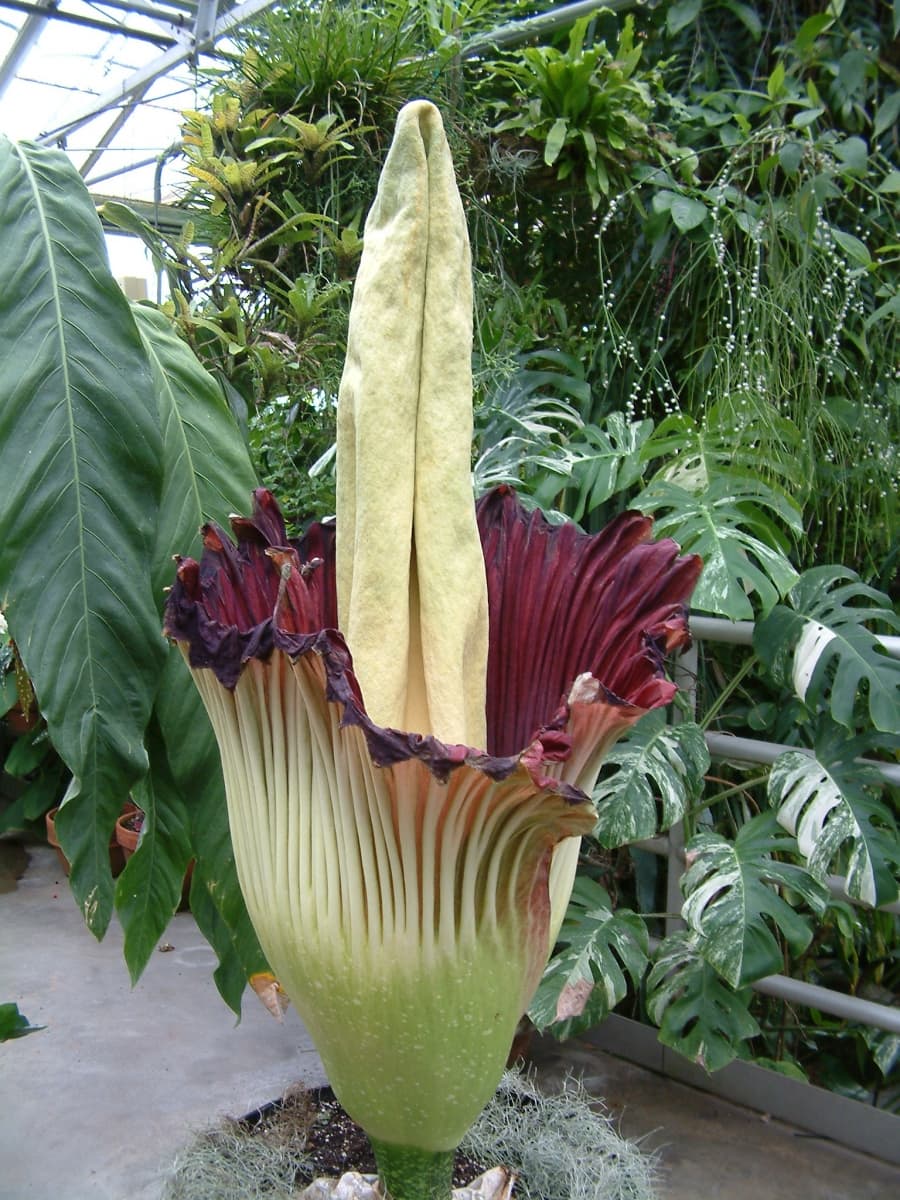At the UNC Charlotte Botanical Gardens, the countdown is on to one of nature’s most amazing — yet infrequent and bizarre — events: the blooming of a titan arum, or “corpse flower.” The titan arum gets its deathly nickname from the putrid smell it releases as it blooms. But there’s much more to the plant than its pungent odor.
Here are five things to know about this incredible plant:
1. What is a titan arum?
The incredible bloom of the titan arum (Amorphophallus titanium) is not a single flower, but rather an inflorescence, or collection of flowers clustered together. It’s always a big event when a Titan Arum blooms because they do so infrequently.
2. How big can a titan arum get?
In botanical gardens, titan arums usually reach heights of five to seven feet with the tallest being about nine and a half feet. In the wild, titans can be much taller, often growing more than 10 feet, with the tallest on record reaching about 11.5 feet. (Pictured: UNC Charlotte's first Titan Arum, "Bella.")
3. Why does the titan arum smell so bad?
The smell isn’t to keep you or other potential threats away, but rather to attract creatures that can help the titan arum reproduce. In the wild, the smell of the titan arum attracts a variety of insects, including flies and beetles whose young normally feed on dead creatures. These insects fly into its inflorescence to lay eggs and are trapped inside for about a day. While trapped, they collect pollen and, when they finally get away, if lucky, they will be attracted to another smelly Titan where they will deposit the pollen.
4. What does the Titan Arum do when it’s not flowering?
When not flowering, which is for most of its life, the titan is doing what most plants do: collecting nutrients, water and sunlight so it can grow. Instead of a stem, the Titan produces a single leaf that can reach 15 feet in height. Just as any leaf, it collects sunlight to make food.
5. Where does the titan arum orginate?
The titan arum comes from Asia and is found in the rainforests of western Sumatra, a province of Indonesia. While no species closely related to the Titan Arum are native to the United States, some botanically adventurous people grow a group of Asian plants called voodoo lilies, which have a fragrance similar to that of the titan arum. However, they have smaller blooms that appear much more frequently.
Get Ready!
Stinker Bell, UNC Charlotte’s youngest titan arum, is showing signs of blooming during the next two to three days (Aug. 3-5, 2023). Follow Stinker Bell’s progress on social media: facebook.com/unccharlottegardens, instagram.com/unccharlottegardens, or twitter.com/UNCCGardens.
Did you know?
The UNC Charlotte Botanical Gardens is no stranger to the titan arum. The first titan arum to bloom in the Carolinas, Bella (pictured above, bloomed in 2007 and 2010 before dying). Other arums include Odie (which bloomed in 2015 before dying) and Rotney the Magnifiscent (which bloomed in 2018 and now is dormant).
